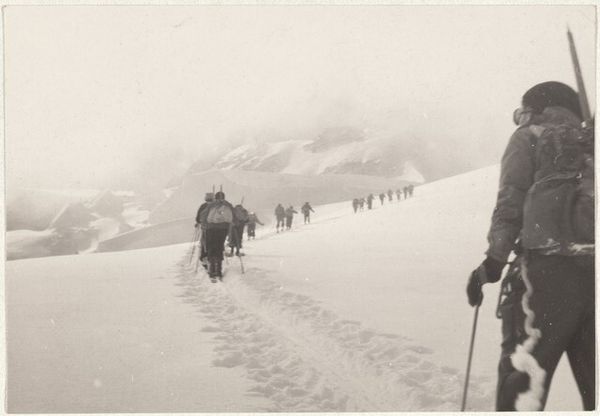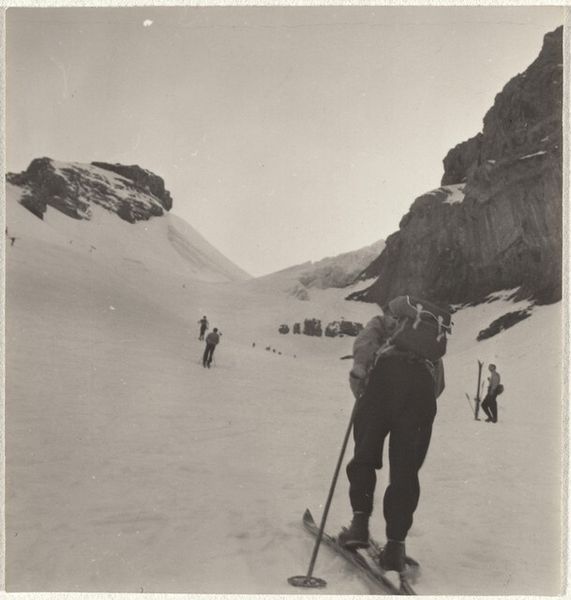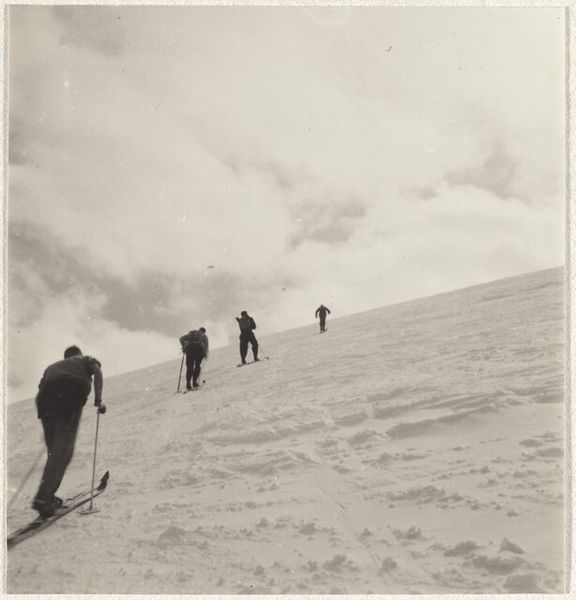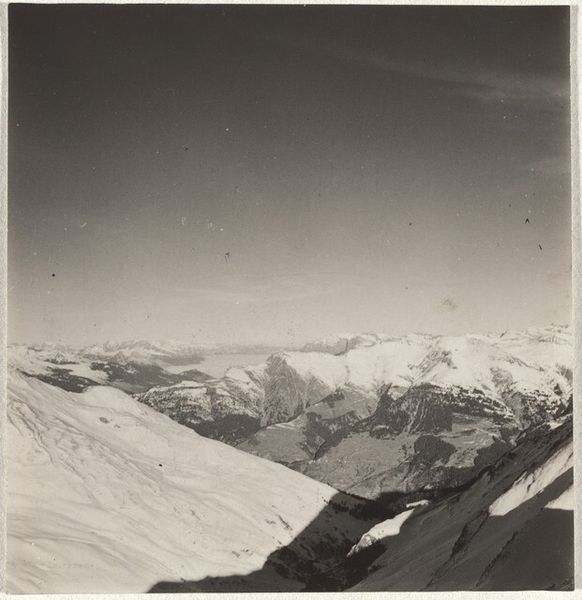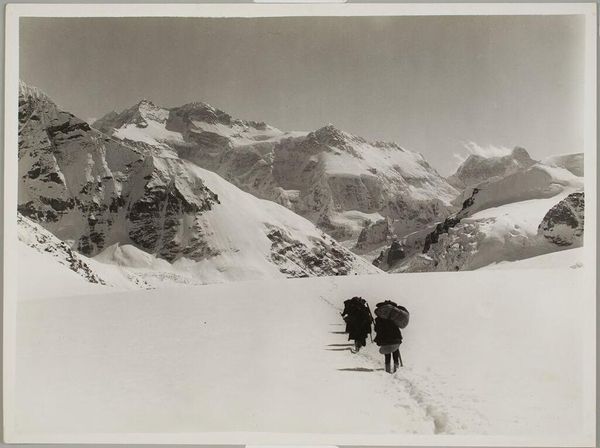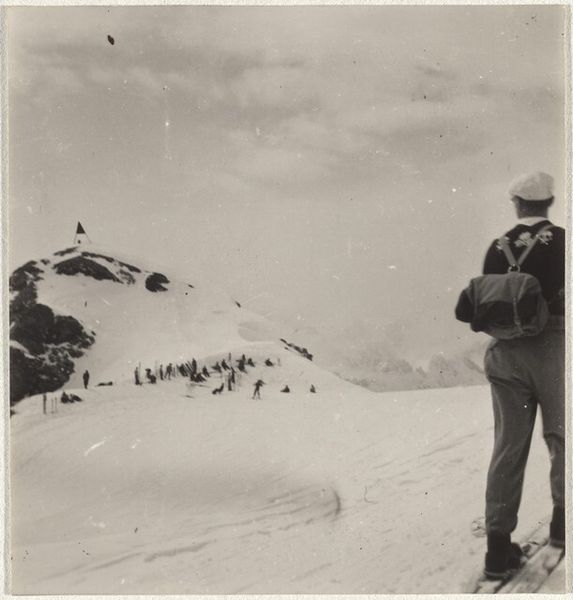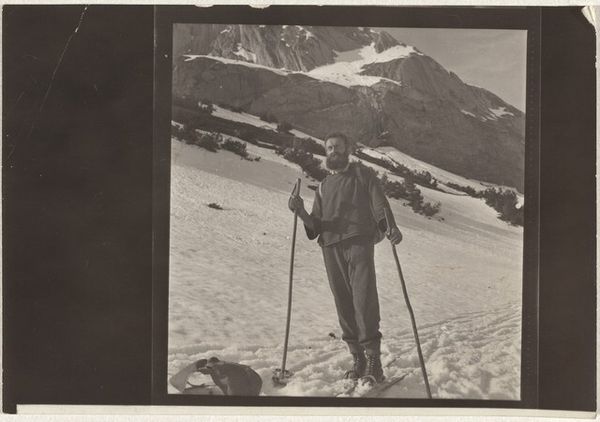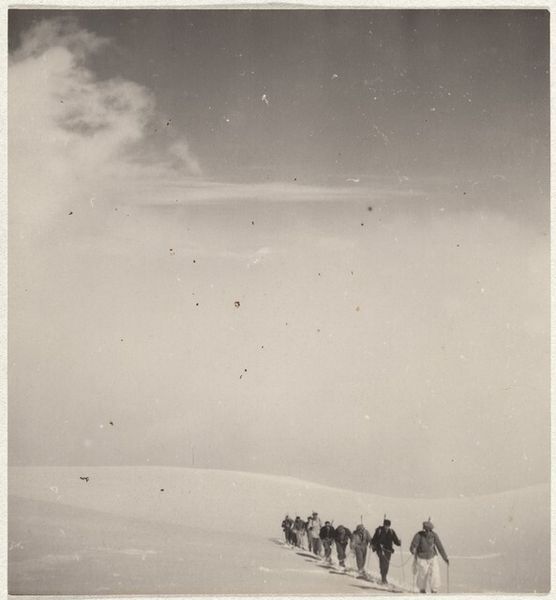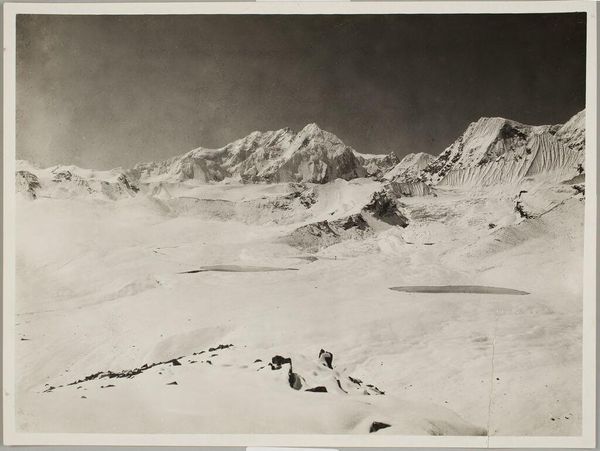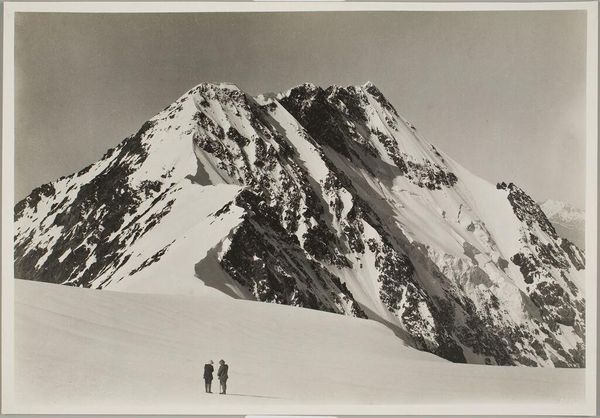
Dimensions: sheet (trimmed to image): 5.7 x 5.4 cm (2 1/4 x 2 1/8 in.)
Copyright: National Gallery of Art: CC0 1.0
Editor: Here we have Robert Frank's "Skiers--Sports", a gelatin-silver print created sometime between 1941 and 1945. It's a striking, almost stark, depiction of skiers against a mountainous backdrop. I’m struck by how it captures the isolation and the physicality of the sport. What do you see in this piece? Curator: It’s interesting that you mention isolation. Looking at this work, produced during the Second World War, I can’t help but consider it through the lens of the historical moment. Sport, often a vehicle for national pride, takes on a different dimension in times of conflict. Frank, though Swiss, was deeply aware of the escalating global turmoil. Does this image perhaps reflect a retreat from the world stage, a seeking of solace in nature's imposing grandeur? The strenuous climb, evident in the skier carrying his equipment, can be interpreted as a symbol of perseverance. Editor: That's a compelling reading, placing the image in such a direct context. I hadn’t considered the broader socio-political influences. The climb does seem particularly arduous here; you can almost feel the strain. Curator: Consider also the composition: the vast landscape dwarfs the figures. It brings to mind discussions around human agency and environmental determinism. Were these skiers active agents conquering the mountain or merely figures humbled by its power? And who has access to spaces such as this? Whose image of sport becomes part of art history, and why? These questions speak to power, privilege and representation. Editor: I see your point. I initially viewed the mountain as simply background, but its scale completely reframes the human presence. Are you saying the artist is subtly questioning themes around power and identity in what seems, on the surface, to be a simple landscape? Curator: Exactly. It prompts us to consider whose stories are being told, and from what perspectives. Every artistic choice carries ideological weight, and in Frank's case, this work reflects a search for freedom intertwined with broader wartime realities. Editor: I never considered a landscape photograph from the '40s could have so many layers of meaning. Thank you, that’s really changed my perspective on this piece. Curator: And your observations about its initial feeling of isolation highlights its power! Engaging with art is a collaborative process; our diverse perspectives are critical.
Comments
No comments
Be the first to comment and join the conversation on the ultimate creative platform.
